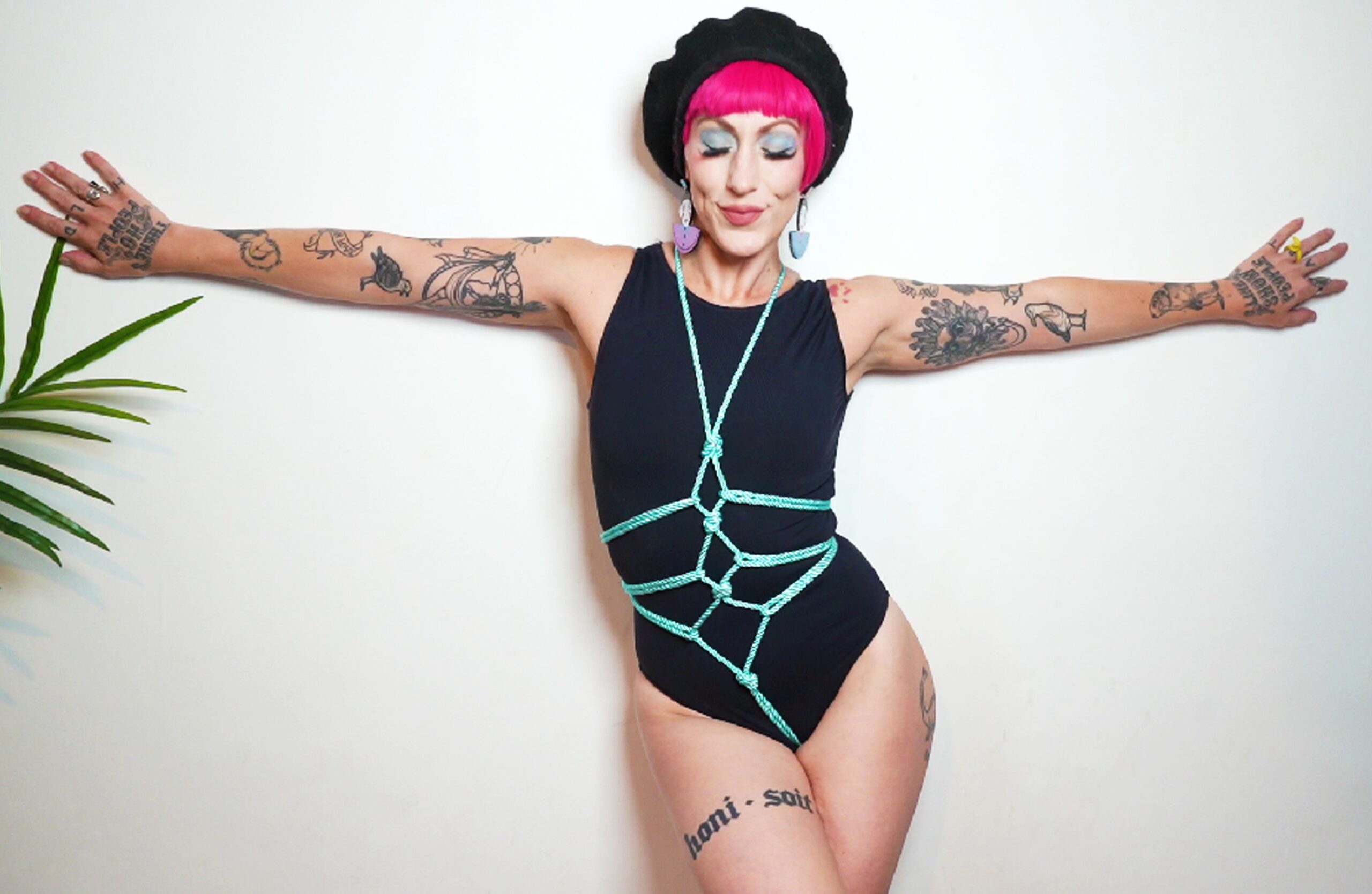Understanding Gender Fluidity
Gender fluidity, a concept gaining increasing recognition, explores the spectrum of gender identities beyond the traditional binary of male and female. Individuals who identify as gender fluid may experience shifts in their gender expression, feelings, or roles over time. Understanding this dynamic aspect of human identity requires empathy, open-mindedness, and a willingness to challenge societal norms that often confine individuals to rigid gender categories.
Defining Gender Fluidity
Gender fluidity acknowledges that gender is not static but rather a fluid experience that can evolve and change over time. Individuals who identify as gender fluid may feel their gender identity shift between different points on the gender spectrum, encompassing various expressions and roles. This fluidity can manifest in changes in clothing style, pronouns, social interactions, or internal feelings of masculinity, femininity, or neither. Recognizing and respecting gender fluidity is crucial for fostering inclusivity and acceptance of diverse gender identities.
Characteristics of Genderfluid Individuals
Gender fluidity is a journey of self-discovery where an individual’s gender identity shifts and evolves over time. It transcends the confines of the traditional binary of male and female, embracing the spectrum of gender expressions and experiences. Genderfluid individuals may identify as different genders at different times or feel like their gender identity fluctuates within a range.
Characteristics commonly associated with gender fluidity include experiencing changes in preferred pronouns, clothing styles, social roles, and internal feelings of masculinity, femininity, or neither. It’s important to remember that each genderfluid person’s experience is unique, and their expressions can vary greatly.
Experiences of Genderfluidity
Understanding gender fluidity requires recognizing that gender is a spectrum, not a fixed binary. Genderfluid individuals may experience shifts in their gender identity over time, expressing themselves differently at various points in their lives. This fluidity can encompass changes in pronouns, clothing, social roles, and internal feelings of masculinity, femininity, or neither.
For some, gender fluidity might involve moving between different genders, while others may experience their gender as fluctuating within a range. It’s essential to approach this topic with empathy and respect, understanding that each person’s journey is unique and deserves to be acknowledged.
Embracing gender fluidity means accepting the diverse ways individuals express their gender identities. It challenges societal norms that often categorize people into rigid boxes and promotes a more inclusive and understanding society where everyone feels comfortable expressing their true selves.
The Social Landscape of Gender Fluidity
The concept of gender fluidity is challenging traditional notions of gender identity, recognizing that individuals may experience shifts in their gender expression and feelings over time. This spectrum of identity acknowledges the diversity of human experience beyond the confines of a binary system, advocating for empathy, understanding, and acceptance of individuals who express their gender in ways that may evolve and change.
Shifting Societal Attitudes
The social landscape of gender is undergoing a significant transformation as society becomes more aware of and accepting of gender fluidity.
- Gender fluidity acknowledges that gender is not fixed but rather a spectrum with diverse expressions and experiences.
- This shift in understanding challenges traditional binary notions of male and female, recognizing the validity of identities beyond these categories.
- As society embraces this fluidity, it becomes increasingly important to foster inclusive environments where individuals can authentically express their gender identities without fear of judgment or discrimination.
The evolving understanding of gender fluidity has profound implications for how we approach social interactions, relationships, and societal structures. It calls for a greater emphasis on empathy, respect, and the celebration of individual differences.
Challenges Faced by Genderfluid Individuals
Despite growing awareness, genderfluid individuals still face numerous challenges in a society often bound by rigid gender norms. Discrimination, misunderstanding, and lack of acceptance can create significant obstacles to their well-being and full participation in society.
One major challenge is the persistent use of outdated language and assumptions about gender. Being misgendered, having one’s identity denied, or facing intrusive questions about their gender can be deeply hurtful and invalidating. This lack of understanding can lead to feelings of isolation and alienation.
Access to healthcare and social services can also pose difficulties for genderfluid individuals. Many healthcare providers may not be adequately trained to address the unique needs of those who identify outside the binary. This can result in inadequate medical care or a reluctance to seek help for fear of prejudice or mistreatment.
Furthermore, employment discrimination based on gender identity remains a prevalent issue. Genderfluid individuals may face bias in hiring, promotion, or workplace interactions, leading to limited opportunities and economic hardship.
Legal recognition and protection also fall short for many genderfluid individuals. Laws regarding gender markers on identification documents, access to changing rooms and restrooms aligned with their gender identity, and protections against discrimination can be insufficient or absent in certain jurisdictions.
Visibility and Representation in Media
The visibility and representation of gender fluidity in media play a crucial role in shaping societal understanding and acceptance. Increased portrayals of genderfluid characters in television shows, films, and literature can help normalize these experiences and challenge stereotypes.
Positive and authentic representations can empower genderfluid individuals by showing them that their identities are valid and valued. Seeing themselves reflected in media can foster a sense of belonging and reduce feelings of isolation. Conversely, harmful or inaccurate portrayals can perpetuate misconceptions and contribute to stigma.
It is essential for media creators to approach the topic of gender fluidity with sensitivity and respect. Avoid using stereotypes or reducing complex identities to simplistic narratives.
Collaboration with genderfluid individuals in the creative process can ensure that representations are accurate, nuanced, and reflect the diversity of experiences within the genderfluid community.

The goal is to create media content that fosters empathy, understanding, and acceptance of gender fluidity, ultimately contributing to a more inclusive and equitable society.
Embracing Change in Gender Identity
Gender fluidity is a growing concept challenging traditional notions of gender identity. It acknowledges that gender is not fixed but rather a spectrum with diverse expressions and experiences. Individuals who identify as gender fluid may experience shifts in their gender expression, feelings, or roles over time. Understanding and embracing this fluidity requires empathy, open-mindedness, and a willingness to move beyond rigid binary categories.

Recognizing Personal Experience
Gender fluidity is a journey of self-discovery where an individual’s gender identity shifts and evolves over time. It transcends the confines of the traditional binary of male and female, embracing the spectrum of gender expressions and experiences. Genderfluid individuals may identify as different genders at different times or feel like their gender identity fluctuates within a range.
Characteristics commonly associated with gender fluidity include experiencing changes in preferred pronouns, clothing styles, social roles, and internal feelings of masculinity, femininity, or neither. It’s important to remember that each genderfluid person’s experience is unique, and their expressions can vary greatly.
Understanding gender fluidity requires recognizing that gender is a spectrum, not a fixed binary. Genderfluid individuals may experience shifts in their gender identity over time, expressing themselves differently at various points in their lives. This fluidity can encompass changes in pronouns, clothing, social roles, and internal feelings of masculinity, femininity, or neither.
For some, gender fluidity might involve moving between different genders, while others may experience their gender as fluctuating within a range. It’s essential to approach this topic with empathy and respect, understanding that each person’s journey is unique and deserves to be acknowledged.

Embracing gender fluidity means accepting the diverse ways individuals express their gender identities. It challenges societal norms that often categorize people into rigid boxes and promotes a more inclusive and understanding society where everyone feels comfortable expressing their true selves.
The evolving understanding of gender fluidity has profound implications for how we approach social interactions, relationships, and societal structures. It calls for a greater emphasis on empathy, respect, and the celebration of individual differences.
Exploring Different Gender Expressions
Gender fluidity, a concept gaining increasing recognition, explores the spectrum of gender identities beyond the traditional binary of male and female. Individuals who identify as gender fluid may experience shifts in their gender expression, feelings, or roles over time. Understanding this dynamic aspect of human identity requires empathy, open-mindedness, and a willingness to challenge societal norms that often confine individuals to rigid gender categories.
- Gender fluidity acknowledges that gender is not fixed but rather a spectrum with diverse expressions and experiences.
- This shift in understanding challenges traditional binary notions of male and female, recognizing the validity of identities beyond these categories.
- As society embraces this fluidity, it becomes increasingly important to foster inclusive environments where individuals can authentically express their gender identities without fear of judgment or discrimination.
The social landscape of gender is undergoing a significant transformation as society becomes more aware of and accepting of gender fluidity.
Despite growing awareness, genderfluid individuals still face numerous challenges in a society often bound by rigid gender norms. Discrimination, misunderstanding, and lack of acceptance can create significant obstacles to their well-being and full participation in society.
One major challenge is the persistent use of outdated language and assumptions about gender. Being misgendered, having one’s identity denied, or facing intrusive questions about their gender can be deeply hurtful and invalidating. This lack of understanding can lead to feelings of isolation and alienation.
Access to healthcare and social services can also pose difficulties for genderfluid individuals. Many healthcare providers may not be adequately trained to address the unique needs of those who identify outside the binary. This can result in inadequate medical care or a reluctance to seek help for fear of prejudice or mistreatment.
Furthermore, employment discrimination based on gender identity remains a prevalent issue. Genderfluid individuals may face bias in hiring, promotion, or workplace interactions, leading to limited opportunities and economic hardship.
Legal recognition and protection also fall short for many genderfluid individuals. Laws regarding gender markers on identification documents, access to changing rooms and restrooms aligned with their gender identity, and protections against discrimination can be insufficient or absent in certain jurisdictions.
The visibility and representation of gender fluidity in media play a crucial role in shaping societal understanding and acceptance. Increased portrayals of genderfluid characters in television shows, films, and literature can help normalize these experiences and challenge stereotypes.
Positive and authentic representations can empower genderfluid individuals by showing them that their identities are valid and valued. Seeing themselves reflected in media can foster a sense of belonging and reduce feelings of isolation. Conversely, harmful or inaccurate portrayals can perpetuate misconceptions and contribute to stigma.
It is essential for media creators to approach the topic of gender fluidity with sensitivity and respect. Avoid using stereotypes or reducing complex identities to simplistic narratives.
Collaboration with genderfluid individuals in the creative process can ensure that representations are accurate, nuanced, and reflect the diversity of experiences within the genderfluid community.
The goal is to create media content that fosters empathy, understanding, and acceptance of gender fluidity, ultimately contributing to a more inclusive and equitable society.
Gender fluidity is a growing concept challenging traditional notions of gender identity. It acknowledges that gender is not fixed but rather a spectrum with diverse expressions and experiences. Individuals who identify as gender fluid may experience shifts in their gender expression, feelings, or roles over time. Understanding and embracing this fluidity requires empathy, open-mindedness, and a willingness to move beyond rigid binary categories.
Gender fluidity is a journey of self-discovery where an individual’s gender identity shifts and evolves over time. It transcends the confines of the traditional binary of male and female, embracing the spectrum of gender expressions and experiences. Genderfluid individuals may identify as different genders at different times or feel like their gender identity fluctuates within a range.
Characteristics commonly associated with gender fluidity include experiencing changes in preferred pronouns, clothing styles, social roles, and internal feelings of masculinity, femininity, or neither. It’s important to remember that each genderfluid person’s experience is unique, and their expressions can vary greatly.
Understanding gender fluidity requires recognizing that gender is a spectrum, not a fixed binary. Genderfluid individuals may experience shifts in their gender identity over time, expressing themselves differently at various points in their lives. This fluidity can encompass changes in pronouns, clothing, social roles, and internal feelings of masculinity, femininity, or neither.
For some, gender fluidity might involve moving between different genders, while others may experience their gender as fluctuating within a range. It’s essential to approach this topic with empathy and respect, understanding that each person’s journey is unique and deserves to be acknowledged.
Embracing gender fluidity means accepting the diverse ways individuals express their gender identities. It challenges societal norms that often categorize people into rigid boxes and promotes a more inclusive and understanding society where everyone feels comfortable expressing their true selves.
The evolving understanding of gender fluidity has profound implications for how we approach social interactions, relationships, and societal structures. It calls for a greater emphasis on empathy, respect, and the celebration of individual differences.
Communication and Support Systems
Gender fluidity is a journey of self-discovery where an individual’s gender identity shifts and evolves over time.
It transcends the confines of the traditional binary of male and female, embracing the spectrum of gender expressions and experiences. Genderfluid individuals may identify as different genders at different times or feel like their gender identity fluctuates within a range.
Characteristics commonly associated with gender fluidity include experiencing changes in preferred pronouns, clothing styles, social roles, and internal feelings of masculinity, femininity, or neither. It’s important to remember that each genderfluid person’s experience is unique, and their expressions can vary greatly.
- Understanding gender fluidity requires recognizing that gender is a spectrum, not a fixed binary.
- Genderfluid individuals may experience shifts in their gender identity over time, expressing themselves differently at various points in their lives.
- This fluidity can encompass changes in pronouns, clothing, social roles, and internal feelings of masculinity, femininity, or neither.
For some, gender fluidity might involve moving between different genders, while others may experience their gender as fluctuating within a range. It’s essential to approach this topic with empathy and respect, understanding that each person’s journey is unique and deserves to be acknowledged.
Embracing gender fluidity means accepting the diverse ways individuals express their gender identities. It challenges societal norms that often categorize people into rigid boxes and promotes a more inclusive and understanding society where everyone feels comfortable expressing their true selves.
The evolving understanding of gender fluidity has profound implications for how we approach social interactions, relationships, and societal structures. It calls for a greater emphasis on empathy, respect, and the celebration of individual differences.
Seeking Professional Guidance
Seeking professional guidance is crucial for individuals exploring or navigating gender identity changes. Therapists specializing in gender identity can provide a safe and supportive space to explore feelings, discuss options, and develop strategies for personal growth.
A therapist experienced in working with gender-diverse clients can offer invaluable support throughout the process. They can help individuals understand their experiences, explore different aspects of gender identity, and make informed decisions about their journey.
Here’s how a therapist can be beneficial:
- Exploration and Self-Discovery: A therapist can create a non-judgmental environment for individuals to explore their feelings, thoughts, and experiences related to gender identity. This exploration can help clarify what gender means to them personally.
- Validation and Affirmation: Experiencing a gender identity that differs from societal norms can be isolating. A therapist can provide validation and affirmation of an individual’s experiences, helping them feel seen and understood.
- Developing Coping Strategies: Adjusting to changes in gender identity can be challenging, and individuals may face emotional distress, social challenges, or family conflicts. A therapist can equip them with coping strategies to manage these difficulties.
- Support with Transitioning (if desired):** For individuals who choose to transition socially or medically, a therapist can offer guidance and support throughout this process, addressing any concerns or questions they may have.
- Building Self-Esteem: Navigating gender identity changes can impact self-esteem. A therapist can help individuals build confidence in their identities and embrace their authentic selves.
Finding a therapist who is knowledgeable about gender identity and LGBTQ+ issues is crucial.
egyptian hucklebuck
Explore the entire post
Get more insights from this blog
- Why Everyone Is Talking About THC Sodas - November 17, 2025
- What Is The Downside Of A Mini Face Lift? - November 14, 2025
- What Are The Best CBD Infused Gummies For Daily Stress - November 11, 2025

